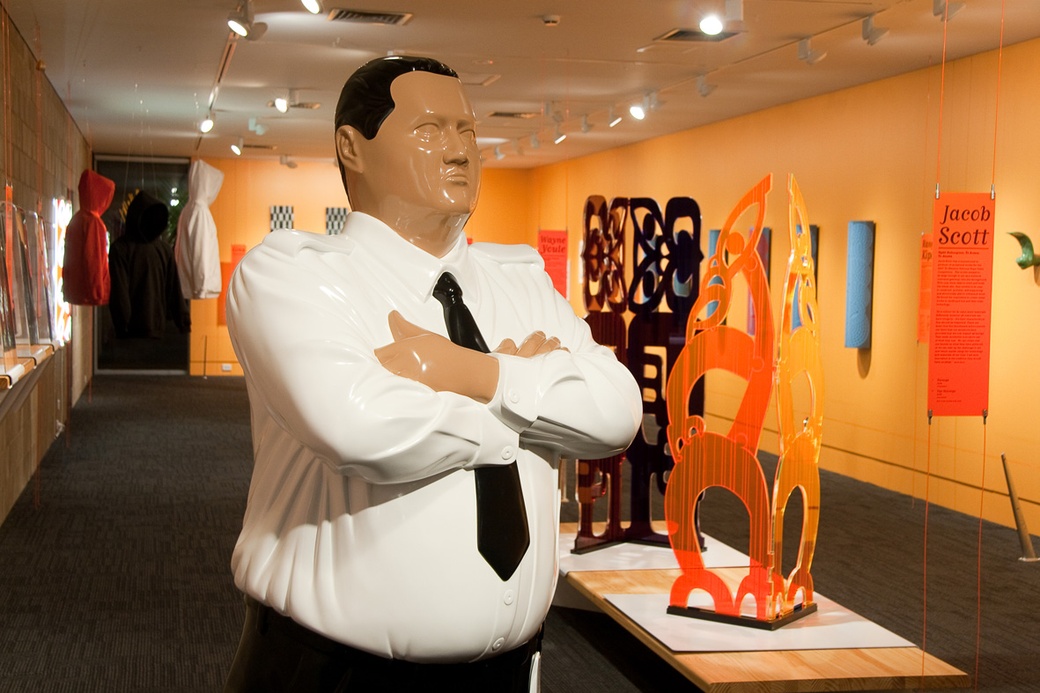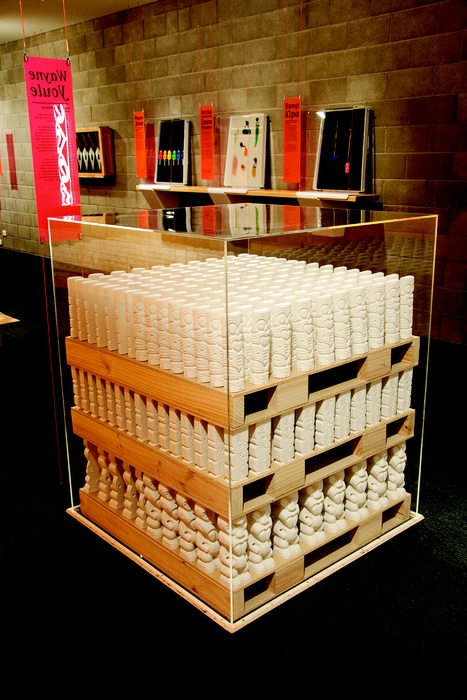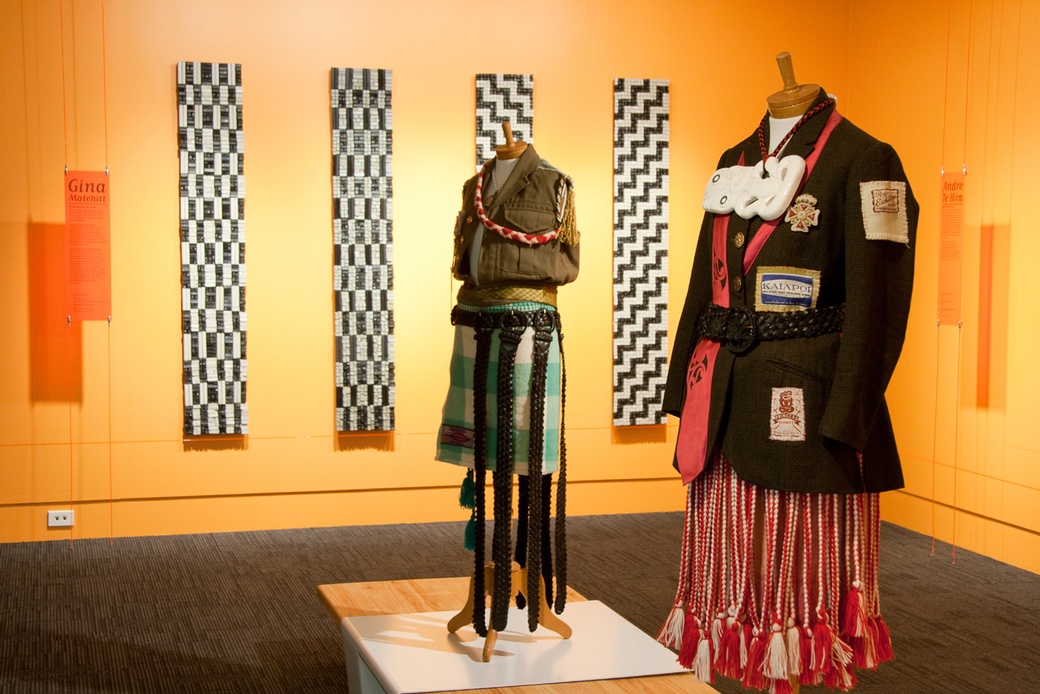

Wayne Youle, WHEN!, 2009. Courtesy of the artist.
An exploration of artworks made by Māori artists who utilise plastic and other synthetic materials.
When plastic tiki replace pounamu pendants and tukutuku panels are made out of computer keyboards, can these objects retain their cultural integrity? Is synthetic still authentic?
Plastic Māori is an exploration of artworks made by Māori artists who utilise plastic and other synthetic materials, curated by Blumhardt Foundation/Creative New Zealand Curatorial Intern Reuben Friend.
Friend says “I called the show ‘Plastic Māori’ because this slang term refers to a Māori person who is culturally uninformed, but pretends to know their stuff. The show looks at the issue of cultural authenticity in contemporary Māori art, and plays with these ideas of artificial identity and fabrication. A common belief shared by the artists I’ve selected is that a tradition of innovation exists in Māori culture. The artists reinterpret customary artforms in a way that enables them to comment on contemporary issues.”
Plastic Maori examines the appropriation, commodification and mass production of Māori taonga (treasures), with art works including kowhaiwhai lightboxes, tukutuku puzzle cubes, jewellery, streetwear and even NZ’s most famous plastic Māori – Manu from Playschool.
Curated by Reuben Friend, the 2008 Blumhardt Curatorial Intern.

